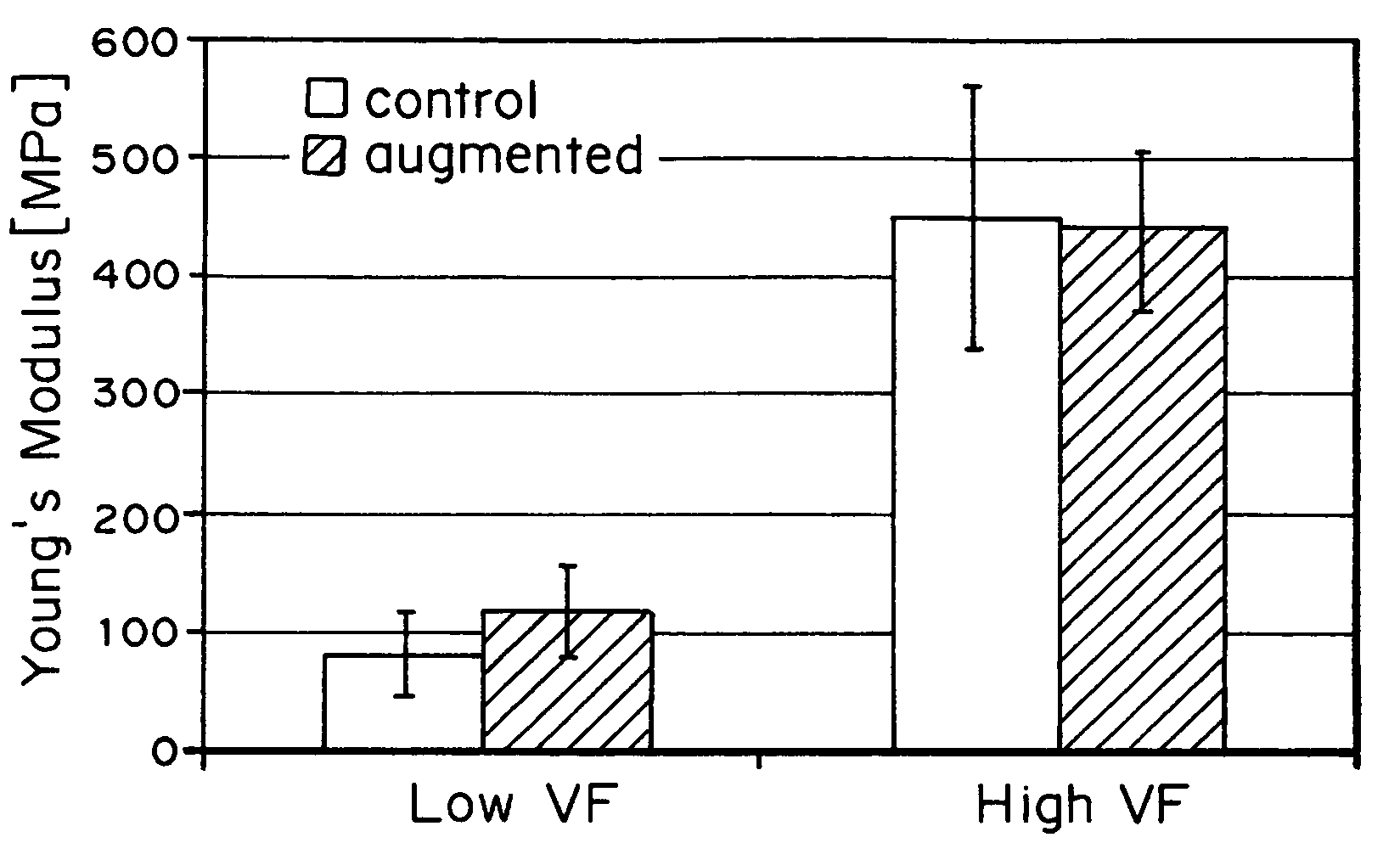Compositions for tissue augmentation
a tissue augmentation and composition technology, applied in the field of biomaterials, can solve the problems of affecting the mobility of individuals, affecting the stability of individuals, and affecting the loss of bone mass and stability, and causing the individual to suffer
- Summary
- Abstract
- Description
- Claims
- Application Information
AI Technical Summary
Problems solved by technology
Method used
Image
Examples
example 1
Synthesis of 1,1,1-tris(hydroxymethyl)propane-tris(1-methyl itaconate)
A. Two Step Synthesis Via Coupling Agent
[0163]Three different procedures may be used in the first step of this synthesis.
[0164]Step 1: 4-hydrogen-1-methyl itaconate (first possibility)
[0165]
[0166]50.7 g (0.32 mol) of dimethyl itaconate and 25.0 g (0.13 mol) of toluene-4-sulfonic acid monohydrate were dissolved in 25 ml of water and 180 ml of formic acid in a 500 ml round bottom flask, equipped with a reflux condenser and a magnetic stirring bar. The solution was brought to a light reflux by immersing the flask in an oil bath at 120° C. and was stirred for 15 min. Then, the reaction was quenched by pouring the slightly yellow, clear reaction mixture into 200 ml of ice water while stirring. The resulting clear aqueous solution was transferred to a separation funnel, and the product was extracted with six 100 ml portions of dichloromethane. The combined organic layers were dried over Na2SO4, and the solvent was remov...
example 2
Synthesis of Triglycerol-penta(1-methyl itaconate) (29)
[0183]
[0184]1.25 g (5.2 mmol) of triglycerol, 5.41 g (36.0 mmol) of 4-hydrogen-1-methyl itaconate, and 0.45 g (3.6 mmol) of 4-(dimethylamino)-pyridine were dissolved under an Ar atmosphere in 20 ml of dry chloroform and cooled to 1° C. 7.09 g (36.9 mmol) of N-(3-dimethylaminopropyl)-N′-ethylcarbodiimide hydrochloride was dissolved in 40 ml of dry chloroform and added dropwise at such a rate that the temperature of the reaction mixture remains 3 solution, 50 ml of 1 M aqueous KHSO4 solution, 50 ml of saturated aqueous NaHCO3 solution, and 50 ml of saturated aqueous NaCl solution, dried over MgSO4, and filtered over ca. 3 cm of silica gel and Celite 545. Evaporation of the solvents yielded 2.56 g (57%) of the desired product. IR analysis confirmed the complete conversion of the OH groups. M=870.78; 5.74 meq / g C═C.
example 3
Synthesis of 1,1,1-tris(hydroxymethyl)propane-tris(1-n-butyl itaconate)
Step 1: 4-hydrogen-1-n-butyl itaconate
[0185]
[0186]104.7 g (0.43 mol) of di-n-butyl itaconate and 3.93 g (0.021 mol) of toluene-4-sulfonic acid monohydrate were dissolved in 140 ml of formic acid in a 500 ml round bottom flask, equipped with a reflux condenser, a thermometer, and a magnetic stirring bar. 30 ml of water were added and the resulting solution was heated to 66° C. by immersing the flask in an oil bath at 72° C. and was stirred at that temperature for 48 hrs. Then, the reaction was quenched by pouring the slightly yellow, clear reaction mixture into 600 ml of ice water while stirring. The resulting light yellow emulsion was transferred to a separation funnel and the product was extracted by washing three times with 200 ml of dichloromethane. The combined organic layers were washed with 100 ml of saturated aqueous NaCl solution and dried over Na2SO4.Removal of the solvent by rotary evaporation yielded 7...
PUM
| Property | Measurement | Unit |
|---|---|---|
| Temperature | aaaaa | aaaaa |
| Fraction | aaaaa | aaaaa |
| Time | aaaaa | aaaaa |
Abstract
Description
Claims
Application Information
 Login to View More
Login to View More - R&D
- Intellectual Property
- Life Sciences
- Materials
- Tech Scout
- Unparalleled Data Quality
- Higher Quality Content
- 60% Fewer Hallucinations
Browse by: Latest US Patents, China's latest patents, Technical Efficacy Thesaurus, Application Domain, Technology Topic, Popular Technical Reports.
© 2025 PatSnap. All rights reserved.Legal|Privacy policy|Modern Slavery Act Transparency Statement|Sitemap|About US| Contact US: help@patsnap.com



